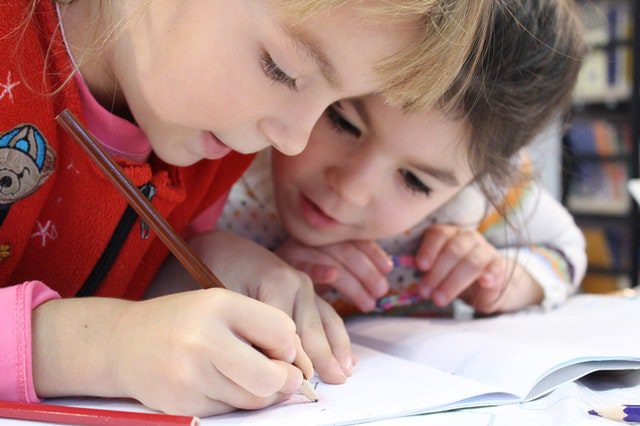Dyslexia is a learning disability. The condition affects the areas of the brain (Broca’s Area, Wernicke’s Area, the primary motor cortex, the posterior middle temporal gyrus, and the middle and posterior superior temporal gyrus) that processes language. Therefore, people with dyslexia have difficulty reading and are unable to identify speech sounds (phonics) and relate them with letters and words. There are 7 types of dyslexia.
Dyslexia becomes identifiable when children start attending school. These school-going children between the ages of five to twelve years may then begin having difficulties with studying.
These impediments are not related to IQ or vision. In fact, individuals with dyslexia may be highly creative and intelligent but lack the basic literacy skills.
Many parents panic when they know their child has dyslexia. Some of them may take the news with pessimism. The good thing however, is that the majority of these children do great with special education modules and tailored tutoring, so there is hope and resources out there. Of course, there is no alternate to emotional and moral support that must come from the family.
Dyslexia is common, even in Hollywood – think Tom Cruise, Orlando Bloom, the Pirates of the Caribbean star Keira Knightly, McDreamy on Grey’s Anatomy Patrick Dempsey, everyone’s favorite Whoopi Goldberg, the great Steven Spielberg, and so on. These people have clearly not let their condition stop them from pursuing their life goals. The one thing we learn from all these real-life people is that that dyslexia is manageable.
The Signs And Symptoms Of Dyslexia
All 7 types of dyslexia are most often highlighted by teachers when a child starts school. There are certain tell-tale signs and symptoms. These indicators may present themselves at different developmental stages of a young person.
Dyslexia during pre-school
At this tender age, a child may:
- exhibit delayed speech development
- show difficulty picking up long words or mixing up two words like ‘ washing chamine’ instead of ‘washing machine’
- have a problem forming new words (reversing the sound of a word)
- confuse words that sound similar and rhyming words
- show difficulty in remembering letters, numbers, or colors
- show a confused reaction to nursery rhymes and songs
Dyslexia during elementary school
The signs and symptoms of all 7 types of dyslexia may become more noticeable during these years. These include:
- problems with speech, hearing, understanding and processing
- reading difficulties not expected of that age
- difficulty in articulating words; answering questions, communicating with classmates·
- inability to pronounce new words, difficulty in keeping the order of letters in a word
- difficulty with identifying similarities and differences in letters and numbers
- difficulty and inconsistency in spelling words and writing, which often makes the tasks tedious and time-consuming
- avoidance of participating in-class activities like reading or spelling bee
poor handwriting - rarely visual disturbances like describing the letters to move around or appear blurred
- poor phonological awareness; the child has difficulty in recognizing basic sounds and is unable to change and create new words
Dyslexia during the teenage years and early adulthood
As the teen grows, the symptoms of dyslexia become more pronounced, which may lead to complications like the development of low self-esteem and social anxiety. Such children may show an anti-academic attitude to cut back on the self-frustration and to avoid being labeled as lazy and slow in class. Teenage dyslexia could include:
- difficulty reading with the teen avoiding any read-aloud sessions
- reading and writing become slow and laborious
- spelling mistakes not expected with that age are apparent
- there are episodes of mispronunciation and problems with word retrieval
- trouble understanding jokes or expressions and idioms
- taking an unusually long time completing reading and writing tasks with an inability to meet deadlines
- difficulty in delivery of brief or summarized notes with a poor organization at written work
- difficulty memorizing and revising for tests
- difficulty doing daily math or numerical solutions or retaining phone numbers
- inability to learn a new language
The 7 Different Types Of Dyslexia
Research results showed that about 80% of children with dyslexia have phonological and surface dyslexia while the rest of the 20% have only one of the two. So what are different types of dyslexia?
- Phonological Dyslexia
In phonological dyslexia, the individual cannot recognize and process letter sounds in words and link them together to form words.
There are familiar sounds in every language that are used repeatedly to form different words. People usually have no difficulty speaking in their native language. However, when it comes to identifying an individual sound to make up a word, people with dyslexia get stuck. Since they do not process the sequence of sounds in a word, they do not recognize or reproduce the word while reading or writing.
- Surface Dyslexia
Surface dyslexia refers to the inability to read words with different spellings and comprehend their pronunciation. For example, words with silent letters like ‘t’ in ‘subtle.’
Not all words have the same spelling as their sounds; it takes memorization. People with surface dyslexia find it hard to see and comprehend the whole word, resulting in an increased processing time and reading difficulty. These individuals have difficulty in recognizing common words by sight yet catch up with new words. The brain finds it hard to remember how the word looks like and this usually happens with familiar words. So comprehending new words is not an issue here.
- Visual Dyslexia
The terms visual and surface dyslexia are often used interchangeably, but they are different. An individual with visual dyslexia has difficulty in reading and remembering the content on what’s written. The brain does not process the visual display accurately. For example not remembering certain letters in a word or whole words in a sentence. This can have severe repercussions on the learning ability of a person.
- Primary Dyslexia
Primary dyslexia is attributed to the condition with genetic causes. If a parent suffers from this type of dyslexia, their offspring can also develop the condition. The disability is more prevalent in males and those who are left-handed.
- Secondary or Developmental Dyslexia
As the name indicates, secondary or developmental dyslexia arises due to some mishap during pregnancy when the fetus is developing and growing such as infection, trauma, or malnutrition of the mother . This type of dyslexia responds the best to treatment.
- Acquired or Post-traumatic Dyslexia
Acquired dyslexia often develops later in the life of a child or an adult. Many environmental factors may cause this type of dyslexia including infection, brain disease, or trauma, to name a few.
- Double Deficit Dyslexia
When two kinds of dyslexia occurs in the same patient, it is referred to as double deficit type. Often the phonological and rapid automatic naming dyslexia occur together. In the latter, the person cannot identify numbers and letters quickly enough in a row, which increases the reading time. The fault lies with the processing, or as some may say, reading speed.
Some other associated disabilities with dyslexia include:
- Dyscalculia (difficulty with math)
Affecting three to six percent of children, this disability is not termed dyslexia but may occur concurrently with the latter. The child has difficulty computing numbers. Remembering, organizing numbers and trouble reading time are the usual complaints. These individuals have trouble with mathematical word problems, carrying and borrowing numbers, managing money, understanding quantity, positive and negative values, charts and graphs.
- Dysgraphia (difficulty writing)
Such individuals’ handwriting may exhibit inconsistent spacing of letters and words, missing or rearranged letters or words. They may write odd spellings with differently shaped or sized letters. Their writing is often illegible to read.
- Left-right disorder (trouble telling left from right)
Often called directional dyslexia, which is a misnomer because it is not dyslexia but may be associated with it. It is a learning disability and the individual suffering from it has trouble reading maps or following directions.
- Poor short-term memory
- Bad organizational and time management skills
- Physical or developmental coordination problems (dyspraxia or DCD)
The Pathogenesis Of Dyslexia
Many factors are attributed to contributing to the development of dyslexia. Some of them include:
- A family history of the condition or any other learning disability
- Low birth weight or premature babies are more prone to dyslexia
- Exposure of mother to drugs, alcohol, or infection during pregnancy
- Smoking by mother during pregnancy
Dyslexia occurs due to specific differences in the parts of the brain that are responsible for processing reading and language. Most often, the cause lies in genes that run in the family.
Complications Of The 7 Types of Dyslexia
It is crucial to detect and diagnose dyslexia as early as possible. If left unchecked, it creates havoc through a person’s mind and later in life as well. Since the disability happens in the early developmental years, it can have serious consequences for a child growing up into adulthood. Some of the risks of having a late detection of dyslexia include:
- A fear of lagging behind peers gives birth to insecurities about oneself. Low self-esteem results in anxiety turning into aggression and behavioral problems
- Social withdrawal from friends and family
- An increased risk of developing attention deficit hyperactive disorder (ADHD)
- An inability to reach their full potential; such children can grow up into adults who have social and economic disadvantages in later life
The Diagnostic Criteria For All 7 Types Of Dyslexia
The diagnosis of dyslexia has more to do with observation and performance or developmental history of a child or adult. There are no specific tests that could pinpoint the disability, yet they help devise the treatment plan. History of a child or an adult about early developmental milestones, educational performance, and any other medical issues or traumatic incidents
- Family history of any learning disability and the child’s home environment
- Tests to rule out any visual and auditory ailments
- Tests to check out any neurological or traumatic causes in the brain
- Psychological testing to rule out any social or other problems (ADHD, depression, anxiety) in a child
- Written questionnaires for teachers, parents, or other family members aimed at identifying any learning disability in a child
- Tests for reading, writing and other academic skills (drawing, mathematical problems, etc.)
- Tests for language vocabulary
- Memory testing
- Tests for logical reasoning and organizational skills, usually in adults
Treatment Of Dyslexia
Treating underlying genetic or brain causes of dyslexia may be difficult but not impossible. However, the condition is manageable. A child diagnosed with any of the 7 types of dyslexia can live completely normal and healthy developmental years if treated on time. There is also no reason for an adult to lag in life activities if diagnosed late because there is no restriction nor limit regarding the learning process.
Specific educational techniques remain the mainstay of the treatment plan. Sometimes, individual or personalized educational protocols are created because no two patients of dyslexia are alike. The important thing is, the sooner the intervention begins, the better.
Techniques involving a multi-sensory approach using visual, hearing and touch are used to improve the identification of letters and reading skills.
The child is made to read aloud to improve reading speed, accuracy and expression. The therapists also help to enhance and build the vocabulary of the child. Individualized education plans for such children help devise targeted and structured programs to overcome disabilities associated with dyslexia.
Parents play a vital role alongside the teachers and therapists to ease their child out of this condition. Early detection and addressing the problem is the first step. Reading should be a priority, particularly read-aloud sessions.
Encouraging and working your child with school work goes a long way. Spending more time with such children and setting a role model by promoting reading, writing, drawing, and solving mathematical solutions is the most generous contribution parents can provide for their child.
For adults who have dyslexia, seeking proper evaluation and reading and writing is an obligation they owe themselves. Asking for workplace adjustments from your employer is justifiable for adults. These may include technology gadgets as work assists (digital recorders or speech-to-text software), providing information and instructions in accessible formats, and allowing more time to complete a task.
All 7 types of dyslexia are manageable. It is difficult but possible to overcome the disability. With scientific advancements in therapeutic modules and gadgets, there is no reason why one with dyslexia should fall behind anyone in any field.
References








